Calla palustris, wild calla, is a perennial herbaceous emergent-aquatic plant that blooms in the late spring and is native to NJ.
Flowers
Calla palustris, wild calla, is part of the Arum (Araceae) family of plants that have unusual flowers with a spathe and spadix. Two other familiar plants in the Arum family are skunk cabbage and Jack in the pulpit.
The spathe is a modified bract that serves to protect the spadix. The spadix is the inflorescence, a modified cluster of flowers all fused together on a fleshy oval base.

In wild calla, the spathe and spadix develop at the end of a separate upright stalk rising from a horizontal rhizome.
The spathe looks like a petal but isn't. This bract is white in front and greenish in back and partially surrounds the spadix. The spathe is hairless and up to 2.5 inches long. The oval spathe tapers rapidly to a narrow linear tip that is rolled inward.
The spadix is a green, white cylindrical structure up to 1.5 inches long. There the many flowers tightly cover the entire surface.
Spadices start to develop in July or August prior to the year that they will flower. Then they will go dormant and overwinter. The next year they will bloom and fruit.
Calla palustris, wild calla, flowers have no petals. The spadix surface is entirely covered with pistils and stamens. There are male flowers and bisexual flowers.
The upper part of the spadix is covered with male flowers, just stamens. The bisexual flowers are below with pistils surrounded by stamens. The red arrow points to stamens; green arrows point to pistils.
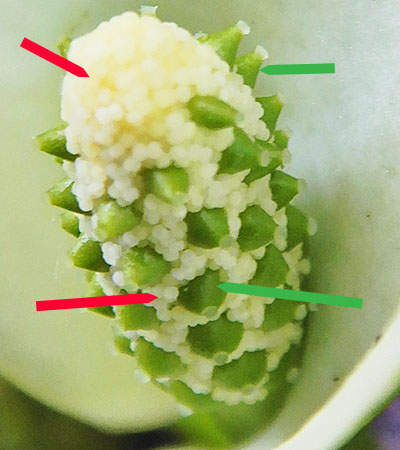
This is a young spadix. The flat stigmas on top of the green ovaries are mature ready for pollen. The stamens are not mature yet. The bisexual flowers are protogynous, pistils maturing before stamens. The stamens are white.

Shown below is a more mature spadix. The stigmas are drying up. The stamen filaments have elongated. Some younger anthers are lobed (green arrow). Older anthers developed 4 pollen sacs (yellow arrow). Some anthers dehisced, released pollen (red arrow).
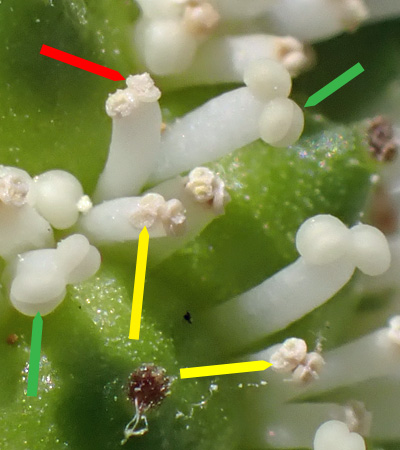
The lower ovaries are larger with fewer stamens surrounding them than the bisexual flowers in the middle of the spadix. The stamens on the top are elongated. Many stamens are maturing. The stigmas are finished.

A more mature spadix. Most of the filaments are elongated.
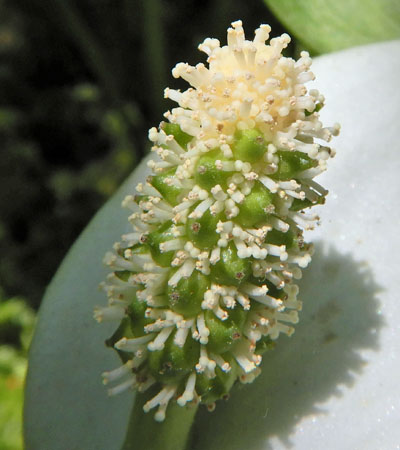
Fruit
The bisexual flowers that are fertile produce deep red berry-like fruits when they mature. The berries taper to short beaks. The spadix enlarges as the fruits/berries mature. At maturity, each berry can be up to half inch across. The immature fruits are green. The flowers open in late spring and the fruit ripen in the summer of the same year.
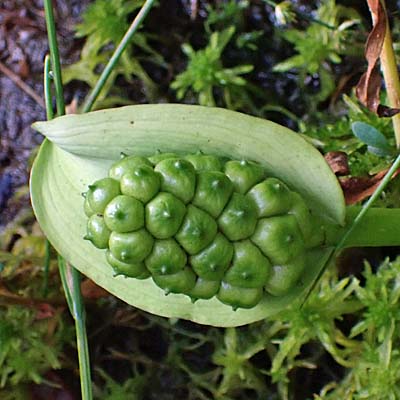
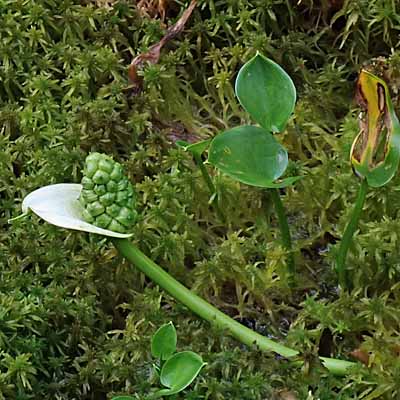

Leaves
Wild calla leaves are heart shaped and about 2-4 inches long. The base is cordate and the tip is pointed. The leaves are waxy with smooth margins. During the spring the leaves emerge before the flowers. The basal leaves form a loose rosette from the rhizomes. The stout leaf stalks are up to 8 inches long.
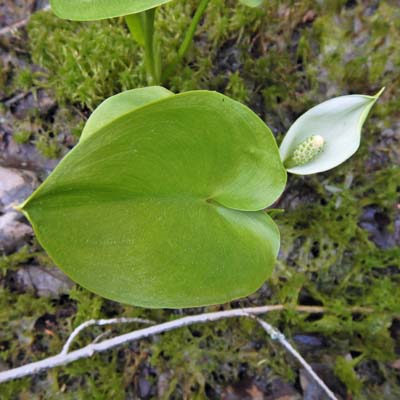
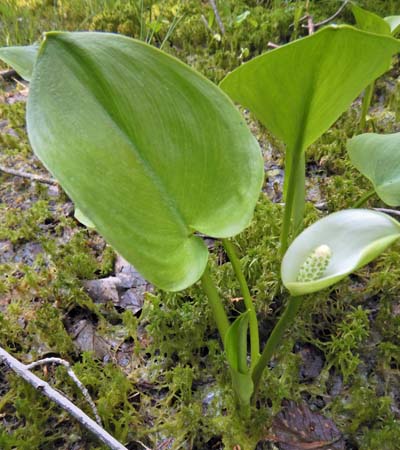
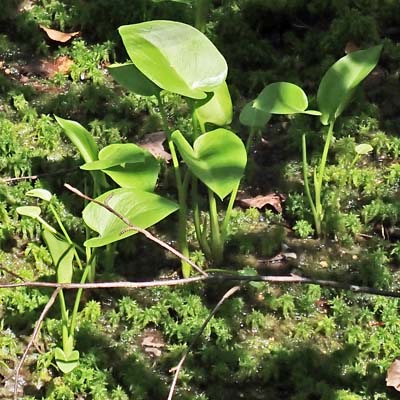
Plant & Habitat
Wild calla grows in shallow water and on the surrounding wet ground. It grows where sphagnum mosses grow that are in high quality natural areas. It has a network of horizontal rhizomes that are submerged or at the surface. The leaves always extend out of the water.
In NJ, wild calla is Vulnerable (S3). It is found in NJ mainly in Sussex County


Text by Millie Ling and all photos by Hubert & Millie Ling. Photos: High Point State Park, Sussex County, flowers 5/18, 5/30, fruit 8/22, all 2023. See iNaturalist.org for locations.
Additional information / References
Additional information / references:
- The USDA website shows Calla palustris- Wild Calla distribution in the US and other information: https://plants.usda.gov/home/plantProfile?symbol=CAPA
- descriptons : Illinois Wildflowers https://www.illinoiswildflowers.info/wetland/plants/wild_calla.html
- SHOOT AND FLORAL DEVELOPMENT IN CALLA PALUSTRIS https://harvardforest1.fas.harvard.edu/publications/pdfs/Scribailo_InternationalJrnlPlantScience_1992.pdf